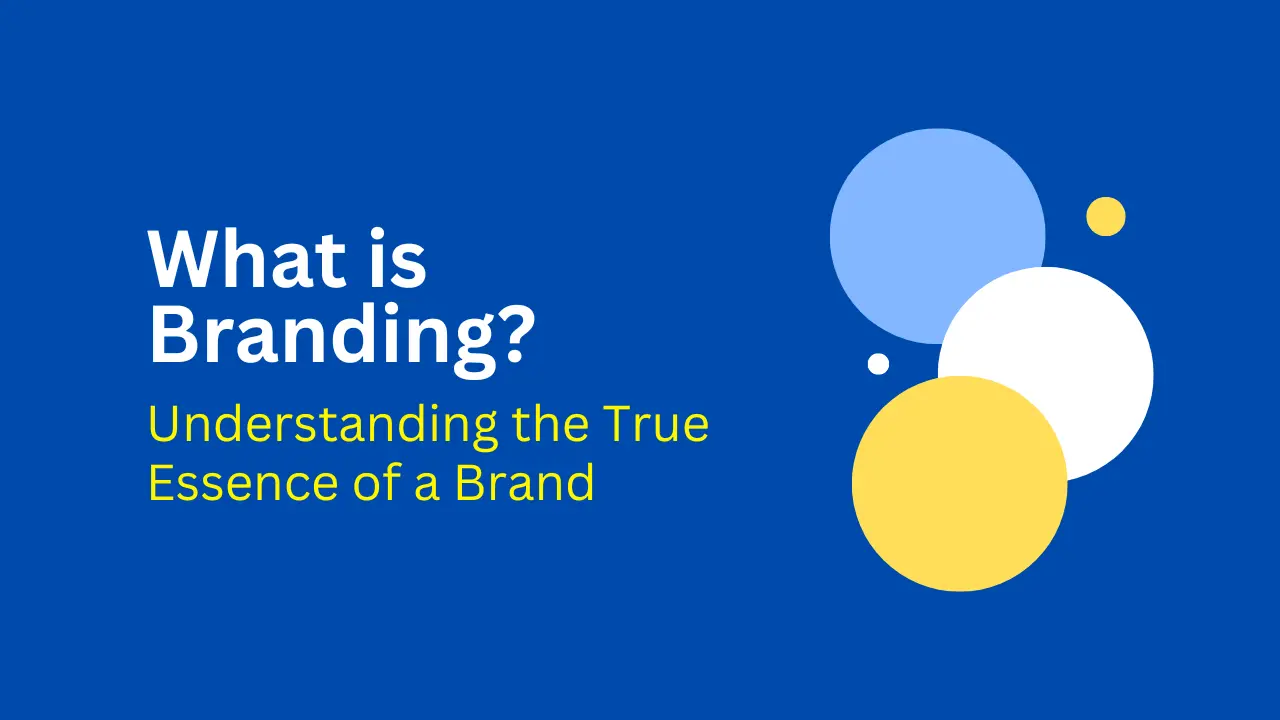Much of the time, when we hear the word “branding,” we picture logos, memorable slogans, or eye-catching color schemes. Although these components are a part of branding, they merely represent a small portion of their whole scope. What exactly is branding, then? Let’s examine this idea in more detail and discover that a brand is more than just its visual identity.
Marketing Is Not Branding
First things first, it’s critical to differentiate marketing from branding. Marketing is the process of advertising goods and services to draw in clients. It involves selling and awareness-raising methods and approaches. Conversely, branding is the fundamental identity of your company. It’s about your identity, your values, and how you want the world to see you.
Branding is an Experience
Giving your customers an unforgettable experience is at the core of branding. It involves more than just the item you are selling; it also involves emotions and experiences. Think of the companies you adore. You love them, but why? Well, they probably like your product because it has quality, you offer excellent customer service, and you are consistent.
Branding is a Feeling
An emotionally resonating brand is in the DNA of every successful entity. It’s about how your brand makes people feel when they engage with it. For instance, Apple isn’t just known for its technology; it’s loved for the feeling of innovation and sophistication it brings. And that emotional link is what drives loyalty and turns customers into brand advocates

Branding is a Relationship
Building a brand is like any relationship. Honest communication, over time establishing Loyalty and Trust. Your brand will resonate your audience and make them feel valued. This relationship is formed with your goods, services or customer care; however the interaction needs to happen on a regular basis and be meaningful.
Branding is Memory
Ultimately a tagline or logo is nothing but an icon. That is the true branding behind those emblems being recalled. It is what comes to mind when consumers hear your [brand]. Make it easier for your brands to be remembered long after the first time people have an encounter with them. Your brand, in the mind’s eye of your customer — at this level, this is exactly what it is after all. Every iteration with them counts towards that recall value when they think about another purchase.
Branding is Association
The colors, logo, and designs do matter but what matters more is the insight it gives to people. As an example, think of the golden arches- McDonalds. The reason these associations are so strong is that they have been built up over the years thanks to consistent branding efforts.

Branding is Meaning
Content is important, sure yes indeed but Without the Intent it holds no value. This is the conscience of your brand — it should reflect who you are…your values, mission, and intentions. It is a matter of not what you say, but why you say. Your brand story can be the inspiration and connector your messages are missing to make people lean in. Again, you create a deeper connection through meaning.
Branding is Purpose
Story is natural in every brand, what makes it interesting is the intent behind this story. Why does your brand exist? What problem does it solve? Final WordYour purpose should dictate all brand efforts. It points your brand in a direction and can draw of those who see the world like you.
Branding is Culture
Your Brand is a Reflection of Your Company Culture And your actions are but a reflection of it in the way you treat your employees, do business and interact with this world. A strong and positive business culture leads to a positive brand perception. Meaning your brand actually lives up to the hype.
Branding is How, Not What
Branding is not just about what you do, but how you do it. It’s about the approach and the manner in which you deliver your products or services. A great example is Zappos, which is known for its exceptional customer service. It’s not just the shoes they sell, but how they go above and beyond to make their customers happy.

Branding is Memory, Not Just Visibility
While being seen is important, genuine branding is about being remembered. It’s the impact you have on others. A powerful brand will stick in the minds of potential customers and influence their decisions even if they don’t buy from you right away.
Branding is Commonality
A brand is not just about the community it creates, but what that community shares in common. Your brand should bring people together with shared interests, values, or goals. This sense of commonality fosters a deeper connection and builds a loyal customer base.
Why Branding Matters
No matter how big or small the firm, branding is essential. It helps you to be noticed in a crowded market, build trust with the audience, and create a loyal group of customers. People are prepared to pay more for companies they love and trust, thus a powerful brand can likewise attract a premium price.
Building Your Brand
To build a strong brand, start by defining your brand’s mission, vision, and values. Understand your target audience and what they care about. Create a visual identity that reflects your brand’s personality, and consistently deliver experiences that align with your brand promise.
Conclusion
Branding is a multifaceted concept that goes far beyond just logos and marketing. It’s about creating meaningful experiences, building emotional connections, and fostering relationships. By truly understanding branding, you can create a strong brand that connects with your audience and lasts a long time.
In today’s competitive market, having a strong brand is more important than ever. So, take the time to define and refine your brand. Make sure every interaction with your audience reflects your brand’s values and mission. Remember, branding is not just what you do, but how you do it. Make it memorable. Make it meaningful. Make it yours.



